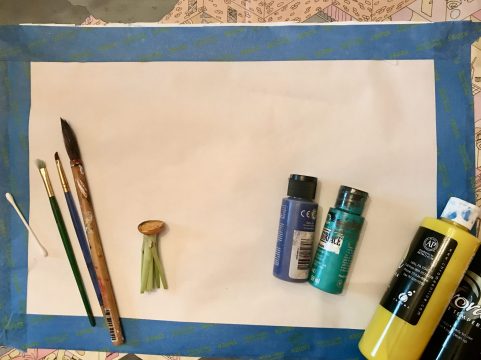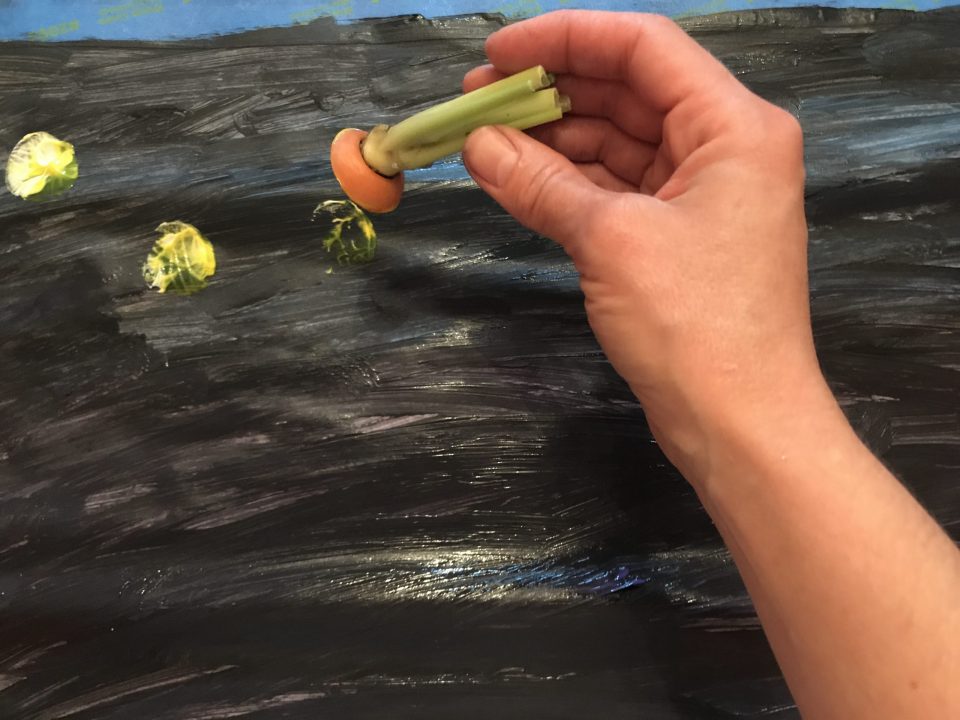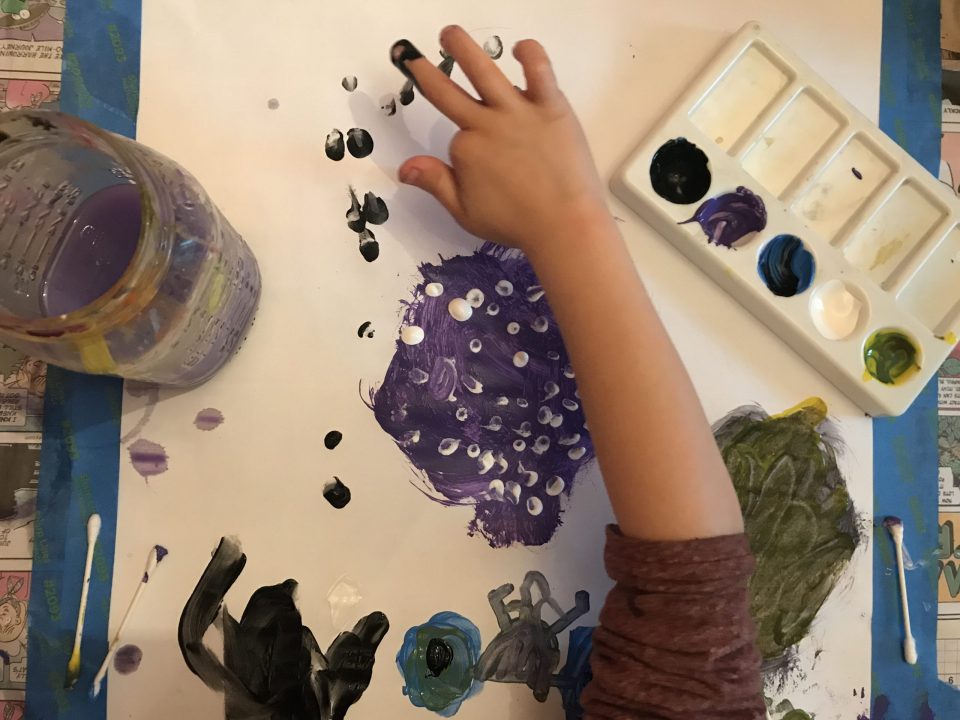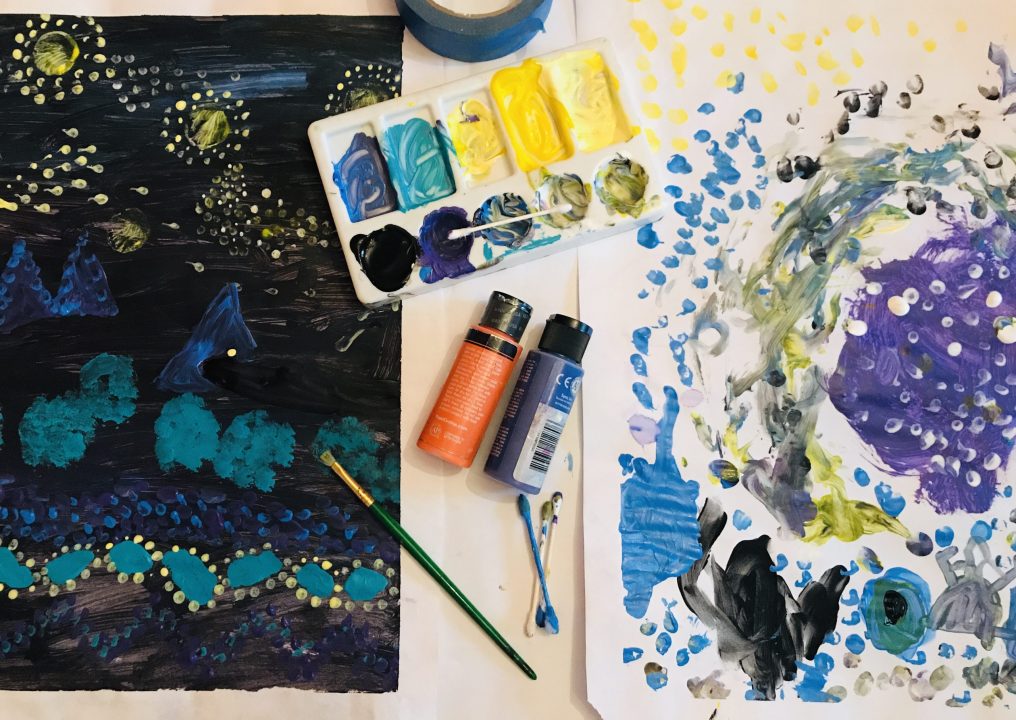Repeat to Infinity

Can you paint a dot? Now can you paint a million dots? Create a painting inspired by Yayoi Kusama’s use of seemingly infinite dots.
We want to see your creations! Share on social media @hirshhorn with #HirshhornInsideOut.
Time: 30–45 minutes
Skill Level: Intermediate
Topic: Repetition

Yayoi Kusama, The Hill, 1953 A (No. 30), 1953. Courtesy of the Hirshhorn Museum and Sculpture Garden, Smithsonian Institution, Washington, DC, Museum Purchase, 1996.
LOOK CLOSELY
What do you see? Let your eye wander around the artwork. Describe colors, shapes, and patterns.
What do you think this is a painting of? Why?
This painting is called The Hill, 1953 A (No. 30). Yayoi Kusama painted it early in her career as an artist. At that time, she was beginning to explore how she could visualize infinity. Infinity is the idea that our universe goes on and on without end. In The Hill, Kusama placed repetitive patterns of small bright dots on a dark night-like color, the dots scattering across the paper. Toothlike lines of triangles also repeat across the paper.

Drawing of Yayoi Kusama by Anne Matlock for the Hirshhorn Museum and Sculpture Garden
MAKE IT




In the painting The Hill, Yayoi Kusama used many small, highly repetitive gestures. For this project, you’ll make your own painting using lots of repetition!
- Gather your materials. You’ll need paper and paint, Q-tips, a paintbrush or another tool that makes dots (a carrot works well!), and tape to secure your paper (optional). To keep yourself and your work area clean, you may also want a smock (or old shirt) and a newspaper or work mat.
- Choose your colors. Choose a few colors to work with. You may want to choose a darker background color and bright contrasting colors for your dots, like those Kusama used in The Hill. You might also simply select colors you like—that’s okay, too! Note: If you choose to paint a background color, you may want to let it dry before adding your dots.
- Paint and repeat. Yayoi Kusama makes many repetitive gestures in her paintings, often very small dots. Use a Q-tip or a paintbrush to make lots of dots on your paper. If you want to make a larger circle or find a tool that’s easier for a young child to grasp, try a cut carrot or potato.
- Use your fingers! Your fingers can also make dots. If you don’t mind a little mess, try walking your fingers across the canvas. Note: Children have very different reactions to the feeling of paint. Some children won’t want to touch it, and that’s perfectly fine. Other children will want to paint their bodies, and that’s up to the adult in charge!
- Repeat to infinity (or until you feel your painting is complete.) Adults, get some stress out and paint alongside your child! We did, and it was a blast. Can you tell whose painting is whose?